
INTERNATIONAL JOURNAL OF EARTH SCIENCES
Scope & Guideline
Illuminating Climate Change and Planetary Dynamics
Introduction
Aims and Scopes
- Geochronology and Radiometric Dating:
Research focusing on the age determination of geological materials using techniques such as U-Pb zircon dating, Ar-Ar dating, and other radiometric methods to understand the timing of geological events. - Petrology and Geochemistry:
Studies on the composition, origin, and evolution of rocks, including igneous, metamorphic, and sedimentary processes, often involving detailed geochemical analyses to infer geological histories. - Tectonics and Structural Geology:
Investigations into the processes that shape the Earth's crust, including fault mechanics, tectonic settings, and the evolution of mountain belts through field studies and modeling. - Sedimentology and Stratigraphy:
Research on sedimentary processes, depositional environments, and the interpretation of stratigraphic records for insights into past geological conditions and events. - Paleoclimatology and Paleoenvironmental Studies:
Examinations of ancient climates and environments through geological records, including isotopic studies, fossil analyses, and sedimentary structures. - Geohazards and Environmental Geology:
Studies addressing natural hazards such as earthquakes, landslides, and volcanic activity, focusing on risk assessment, mitigation strategies, and environmental impacts. - Geophysics and Remote Sensing:
Utilization of geophysical methods and remote sensing technologies to investigate subsurface structures, tectonic movements, and geological phenomena.
Trending and Emerging
- Climate Change and Geological Impacts:
An increasing number of studies examine the geological implications of climate change, focusing on sedimentary responses, paleoclimatic reconstructions, and environmental changes. - Geological Storage of Carbon Dioxide:
Research on carbon capture and storage technologies has gained momentum, reflecting global efforts to mitigate climate change impacts and transition to sustainable energy. - Geochemistry of Renewable Resources:
Emerging interest in the geochemical processes associated with renewable energy resources, including geothermal and hydrocarbon systems, is becoming more prevalent in recent publications. - Natural Hazards and Risk Assessment:
A growing focus on understanding and mitigating natural hazards, such as earthquakes and landslides, particularly in relation to urban planning and infrastructure sustainability. - Technological Advancements in Earth Sciences:
The integration of advanced technologies such as machine learning, remote sensing, and GIS in geological research is increasingly common, enabling more sophisticated analyses and interpretations.
Declining or Waning
- Volcanology of Inactive Systems:
Research focusing on historical volcanic systems has decreased, possibly due to a shift towards studying active systems and contemporary volcanic hazards. - Paleoceanography:
While still important, there has been a noticeable reduction in studies specifically dedicated to paleoceanographic reconstructions, possibly overshadowed by broader climate change research. - Glacial Geology:
Research into glacial processes and formations appears to be waning as interest grows in other areas such as climate impacts and contemporary environmental changes. - Historical Geology:
The exploration of geological history through purely historical lenses is less prominent, as modern methodologies and interdisciplinary approaches dominate current research. - Mineral Exploration Techniques:
With the rise of more integrated approaches to mineral resources, traditional studies focused solely on mineral exploration techniques have seen a reduced emphasis.
Similar Journals

JOURNAL OF IBERIAN GEOLOGY
Pioneering research in the realm of Iberian geology.JOURNAL OF IBERIAN GEOLOGY, published by Springer International Publishing AG, is a pivotal platform dedicated to advancing the field of geology and stratigraphy. With an ISSN of 1698-6180 and E-ISSN of 1886-7995, this journal has earned its reputation in the academic community, holding a commendable Q2 ranking in both Geology and Stratigraphy for 2023, reflecting its contributions to contemporary geological research. Spanning from 2007 to 2024, it provides a comprehensive forum for scholars and practitioners from around the globe to disseminate their findings pertaining to the Iberian Peninsula, enhancing the understanding of regional geological phenomena. The journal has carved out a significant niche within the Earth and Planetary Sciences, ranking #137 out of 321 in Geology and #24 out of 55 in Stratigraphy, indicating its wide-reaching impact and scholarly engagement. The Journal of Iberian Geology serves as an indispensable resource for those interested in the complexities of geological structures, stratigraphic sequences, and the broader implications of geological research, making it a vital reference for researchers, professionals, and students alike.
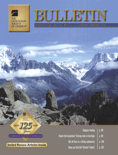
GEOLOGICAL SOCIETY OF AMERICA BULLETIN
Exploring the Depths of Earth's MysteriesThe Geological Society of America Bulletin (GSA Bulletin), with ISSN 0016-7606 and E-ISSN 1943-2674, is a premier scholarly journal published by Geological Society of America, Inc. Based in the United States, this journal has been a cornerstone of geological research since its inception in 1890, making significant contributions to the understanding of Earth sciences over more than a century. Recognized for its rigorous peer-review process, the GSA Bulletin currently holds a prestigious Q1 ranking in Geology, positioning it among the top 14 journals in Earth and Planetary Sciences in terms of Scopus ranking, reflecting the high quality and impact of the research it publishes. Researchers, professionals, and students alike benefit from its comprehensive coverage of geological topics, including sedimentology, volcanology, and paleontology, which supports the advancement of knowledge in the geosciences. While the journal is not open access, it continues to provide a vital platform for innovative research and critical discussions that shape the future of geology.
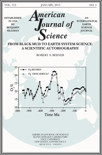
AMERICAN JOURNAL OF SCIENCE
Fostering Insights into Geological ProcessesThe American Journal of Science, published by the esteemed Amer Journal Science, stands as a leading platform for groundbreaking research in the field of Earth and Planetary Sciences. With an impressive impact factor and distinguished Scopus rank 34/195 in its category, the journal occupies a prestigious position in the academic community, reflecting its high-quality and influential contributions to scientific knowledge. The journal’s objective is to disseminate original research, comprehensive reviews, and critical discussions that advance our understanding of geological processes and planetary phenomena, supporting scholars and practitioners in their pursuit of knowledge. Despite its traditional publication structure, viewers can explore its rich repository of works dating from 1945 to present, offering a wealth of insights into the dynamic Earth sciences. The journal remains a vital resource for researchers, professionals, and students eager to engage with the latest scientific findings and foster further innovation in the field.
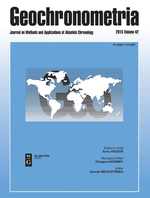
Geochronometria
Pioneering Research in Earth and Planetary SciencesGeochronometria is a renowned journal dedicated to the field of Earth and Planetary Sciences, published by SCIENDO in Germany. With a history spanning over two decades since its inception in 2000, it has established itself as a key platform for disseminating innovative research and methodologies in geochronology, radiometric dating, and related disciplines. Currently, it holds a respectable Q2 ranking in the subject area, showcasing its relevance and influence, particularly with a Scopus rank of #92 out of 159 journals in Earth and Planetary Sciences, which places it in the 42nd percentile. This journal is committed to facilitating open discussions and advances in understanding geological time scales and processes, making it an essential resource for researchers, professionals, and students alike. Although it is not an open-access journal, its significant contributions to the scientific community underscore its pivotal role in advancing knowledge within the field.

Geologos
Exploring Earth and Beyond: Where Knowledge Meets DiscoveryGeologos is a peer-reviewed journal dedicated to advancing knowledge in the field of Earth and Planetary Sciences. Published by SCIENDO, this Open Access journal has been facilitating unrestricted access to research findings since 2009, ensuring that scholars, professionals, and students can engage with up-to-date scientific discourse without barriers. With an ISSN of 1426-8981 and an E-ISSN of 2080-6574, Geologos is indexed in Scopus, where it currently holds a rank of #111 out of 195 in the General Earth and Planetary Sciences category, reflecting its commendable impact within the discipline. Based in Poland, the journal embraces contributions from international authors, promoting a diverse and inclusive dialogue on topics ranging from geological phenomena to planetary processes. As a Q3 journal in the Earth and Planetary Sciences category, Geologos is committed to enhancing the understanding and appreciation of the Earth's systems, making it an essential resource for those engaged in research and practice within this dynamic field.

Journal of Earth Science
Bridging research and real-world challenges in Earth science.Journal of Earth Science, published by the China University of Geosciences, Wuhan, is a leading journal in the field of Earth and Planetary Sciences, recognized for its significant contributions to the understanding of geological processes and environmental challenges. With an impressive Q1 ranking among Earth and Planetary Sciences journals and a strong position at Rank #39/195 in Scopus, this journal not only showcases high-quality research but also serves as a crucial platform for disseminating innovative findings, spanning a broad spectrum of topics from geophysics to climate change. The journal adopts an open access model, which enhances the visibility and accessibility of research articles published from 2009 to 2024, thereby facilitating collaboration and knowledge sharing among the global scientific community. With its commitment to advancing geosciences, Journal of Earth Science is invaluable for researchers, professionals, and students alike, eager to stay informed and contribute to ongoing discussions in this dynamic field.
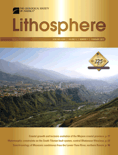
Lithosphere
Transforming Geological Insights into Global Impact.Lithosphere, published by GEOSCIENCEWORLD, is a premier open access journal that has been at the forefront of geological research since its inception. With the ISSN 1941-8264 and the E-ISSN 1947-4253, this journal serves as a vital resource for researchers, professionals, and students interested in Earth and planetary sciences, particularly in the field of geology. Its impressive ranking of Q2 in the 2023 category indicates its vital role in disseminating high-quality, impactful research. The journal’s commitment to open access since 2018 enhances its reach, providing global accessibility to cutting-edge studies that span a diverse range of geoscientific topics, from tectonics to sedimentology. With Scopus Rank #88 out of 321 in Earth and Planetary Sciences, it offers a strong platform for scholars to share their findings and engage with the latest advancements in the discipline. As the journal continues its convergence from 2009 to 2024, Lithosphere remains a crucial publication for those striving to deepen their understanding of Earth's systems.
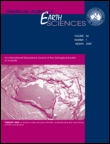
AUSTRALIAN JOURNAL OF EARTH SCIENCES
Bridging Theory and Practice in Earth SciencesAustralian Journal of Earth Sciences, published by Taylor & Francis Ltd, has established itself as a leading journal in the field of Earth and Planetary Sciences since its inception in 1984. With an impactful reach reflected in its ranking as Q2 in the Earth and Planetary Sciences category, the journal contributes significantly to the advancement of knowledge through rigorous peer-reviewed research. While it is not Open Access, the journal ensures broad accessibility through institutional subscriptions and various academic platforms. With a commitment to covering diverse topics within the Earth sciences, including geosciences, geology, and environmental studies, the Australian Journal of Earth Sciences is an essential resource for researchers, professionals, and students seeking to deepen their understanding of the dynamic processes that shape our planet. Engaging with the journal means being part of a vibrant community that aspires to push the boundaries of scientific inquiry and innovation in Earth sciences.
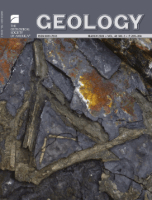
GEOLOGY
Advancing Earth Sciences Through Innovative ResearchGEOLOGY, published by the Geological Society of America, Inc, is a premier journal dedicated to advancing knowledge, research, and discussion in the field of geology. With an ISSN of 0091-7613 and an E-ISSN of 1943-2682, this journal stands out with an impressive Q1 ranking in Geology for 2023, positioning it among the top journals in the realm of Earth and Planetary Sciences, specifically holding a remarkable rank of 11 out of 321, reflecting its 96th percentile status. This journal aims to publish innovative research articles that cover all aspects of geology, from tectonics and sedimentology to paleontology and mineralogy, offering invaluable insights for researchers, professionals, and students alike. Although not currently open access, GEOLOGY maintains a rigorous review process ensuring the quality and integrity of the research it publishes. For more than five decades, spanning from its inception in 1973 to the upcoming publications in 2024, GEOLOGY has been instrumental in shaping the geological discourse and continues to be a vital resource for the scientific community.

China Geology
Advancing Knowledge in Geology and BeyondChina Geology, published by KEAI PUBLISHING LTD, is a leading open-access journal that serves as a pivotal platform for disseminating high-quality research across a wide spectrum of Earth sciences. Since its inception in 2018, the journal has rapidly established itself with an impressive Q1 ranking in multiple critical categories, including Geology, Economic Geology, and Oceanography, among others, reflecting its significant contribution to the academic community. Positioned as a top-tier journal in the Earth Planetary Sciences domain, it ranks #22 out of 321 in Geology and exhibits an admirable impact in sub-fields such as Earth-Surface Processes and Geochemistry and Petrology. China Geology is committed to promoting rigorous scientific inquiry and facilitating the open exchange of knowledge in the geosciences, making it an essential resource for researchers, professionals, and students eager to explore innovative developments and fundamental advances in geology. The journal’s accessibility ensures that critical findings reach a broad audience, thereby enhancing collaboration and driving forward scientific discourse in the global community.